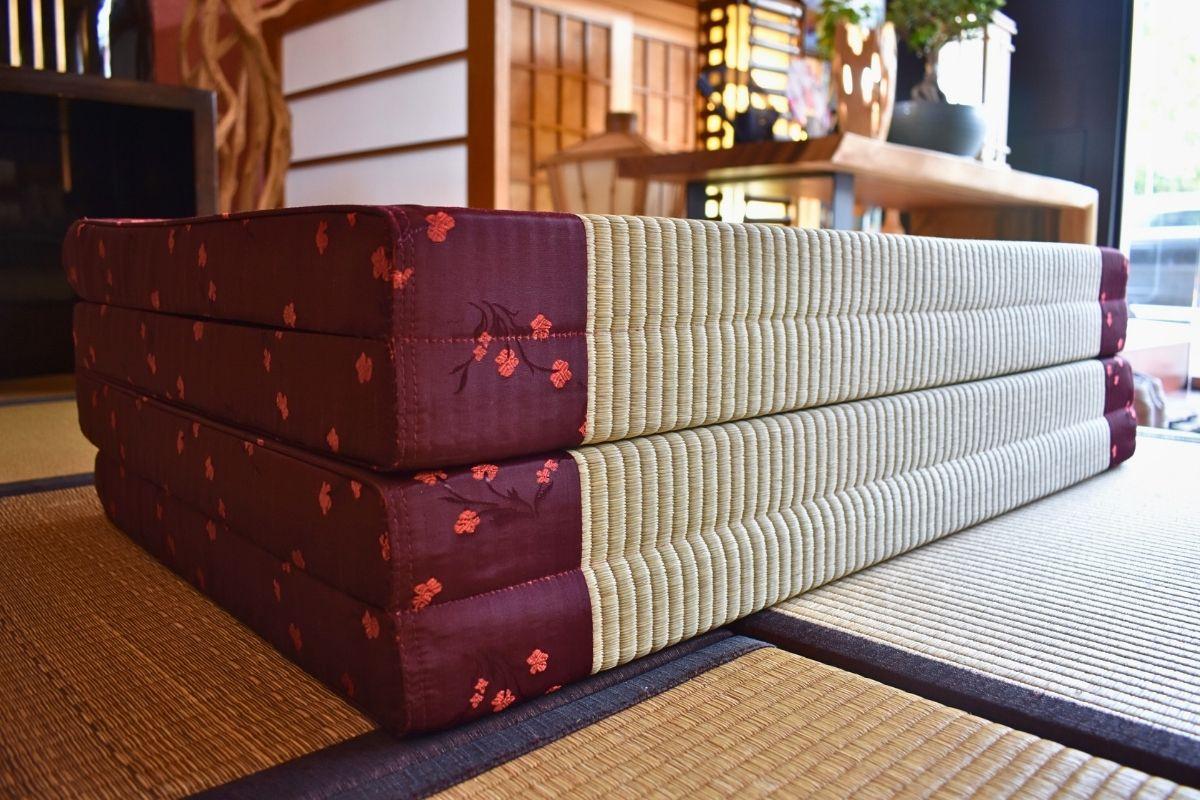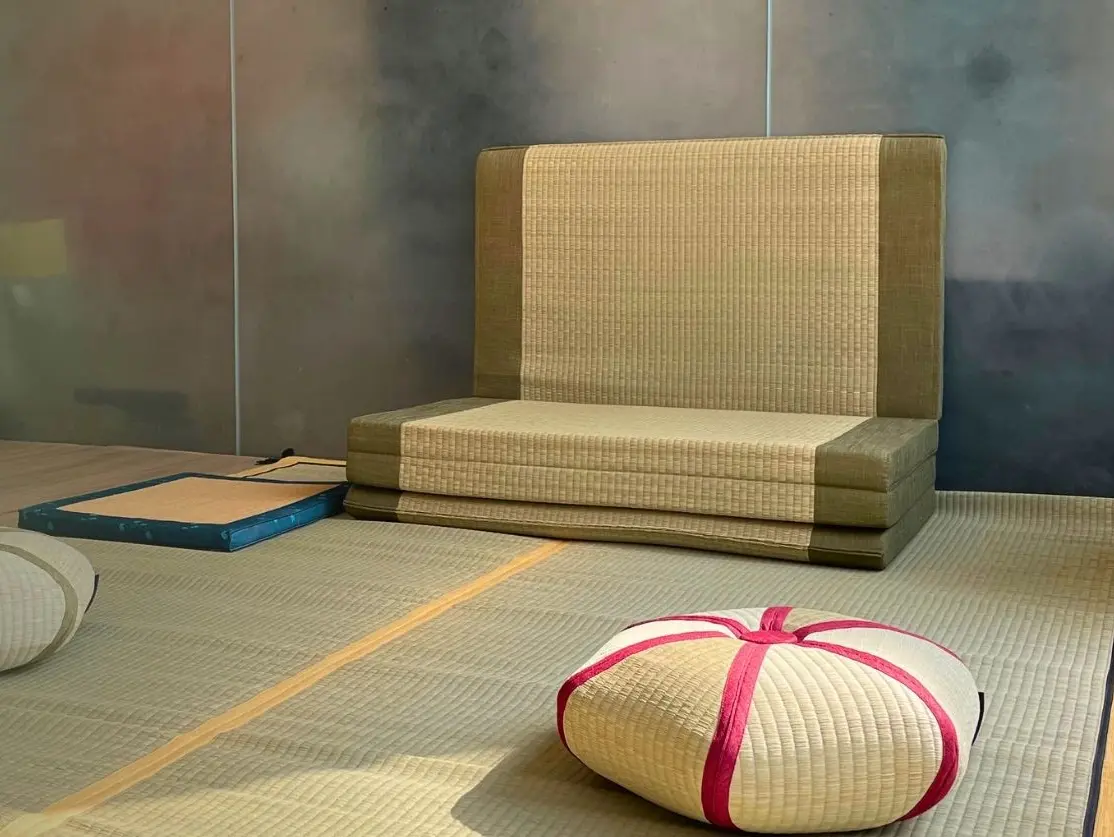Floor sleeping might sound a little extreme the first time you hear about it.
Most of us have grown up on spring mattresses or cushioned beds. The thought of abandoning them for the floor might feel like we’re giving up a part of our comfort life.
An increasing number of people have started wondering if that default actually works for everyone. Some of them have tried it to relieve lower back pains. Some have tried it just to declutter their space. And, some want to feel more connected: to themselves, to their homes, and to Mother Earth.
So, is it really worth trying? Let’s talk about the realities of floor sleeping, who'd benefit from it, and how it can be done without making you wake up sore, grumpy, or totally confused.
What’s the Frenzy with Floor Sleeping?
Floor sleeping has been the norm for centuries in Japan, Korea, and many other regions.
Traditional Japanese floor sleeping setups like Tatami Mats and Shikibutons are still being used for floor sleeping in today’s modern world! While some stick to this practice out of respect for tradition, the increasing popularity suggests that it is, indeed, an effective way to improve wellbeing.
Sleeping on a firmer surface can help to straighten your spine, which is great for back sleepers. It stops your body from sinking into awkward positions that cause aches in your neck and back. Plus, sleeping on the floor can help save space in smaller homes and offer a cooler sleeping environment, especially when it's warm outside.
Is It Comfortable?
Before we answer that, just note that floor sleeping doesn’t mean you have to sleep directly on a hardwood or tiled floor. In fact, that’s not going to be beneficial for anyone.
Comfort comes down to the right setup.

- A supportive and heat-regulating base that prevents you from freezing on the floor (like a Tatami Floorboard)
- A mattress that’s cushioned, but still supportive (like a Shikibuton)
- A neck-supporting pillow that matches your sleep position and fits perfectly against your shoulders (like a Tatami Fusion Makura Pillow)
It might feel a bit too firm at first. But many people say that after a few nights (or weeks), their body adjusts naturally. They wake up feeling more rested, with less stiffness or fewer aches.
You Might or Might Not Love It
As intriguing as it sounds, floor sleeping is NOT for everyone.
If you’re facing joint issues, sensitive bones, or certain back problems, consult your physiotherapist or doctor before trying to sleep on the floor.

Elderly folks or anyone else who has trouble getting up from the floor might also find it inconvenient. And when the climate turns cold, the ground might be a little too chilly for us to handle.
But don’t fret; there are workarounds for many of us.
The Best Way to Start Floor Sleeping
 Slow and steady wins the race, just like the turtle. Take your time to test it out, and don't discard your current bed right away.
Slow and steady wins the race, just like the turtle. Take your time to test it out, and don't discard your current bed right away.
If you’re a complete beginner, try floor sleeping for one to two nights per week. You could start with a setup that was recommended by thousands of experienced floor sleepers just to be on the safer side:

- A Tatami Mattress for firm support and comfortable sleeping temperatures

- A Shikibuton for balanced cushioning and enriched comfort

- A Tatami Makura Pillow that’s suitable for your sleep positions
If you’re worried about freezing during the colder seasons, cover yourself up with a Kakebuton!
What to Expect
It’s going to take some time to get used to sleeping on the floor.
The first few nights on a firmer surface might feel a little uncomfortable, especially if you’ve spent most of your life sleeping on soft, springy beds.
You might wake up feeling a little sore or stiff, not because you’re doing something wrong, but because your posture and muscles are getting introduced to something new.

And that’s normal. It’s similar to trying out barefoot shoes for the first time. Initially, your feet might feel funny. But over time, you’ll find yourself having a stronger sense of balance and an improvement in your walking pattern.

Listen to your body during the adjustment period. Add another layer above your current setup if you need more cushioning, or adjust your pillow height if you’re feeling aches in your neck (the Hinoki Pillow’s brilliant for that kind of adaptability!).
There’s No Fixed Reason For Floor Sleeping
Floor sleeping isn’t being embraced worldwide because it’s trendy. For some, it’s to keep their small room minimalistic and spacious. For others, it’s an opportunity to improve their posture, get better sleep, and reduce body aches in the long-term.
If you’re curious, try it.
And if you’re still feeling uncertain, feel free to contact us for more advice!
We specialize in Tatami Mattresses, Shikibutons, and more that are designed to support you in this shift. They’re naturally temperate, firm, and made to last, with many more benefits that you can explore and experience!
